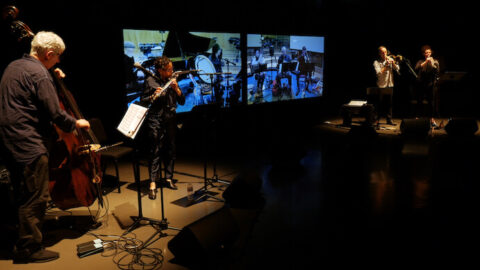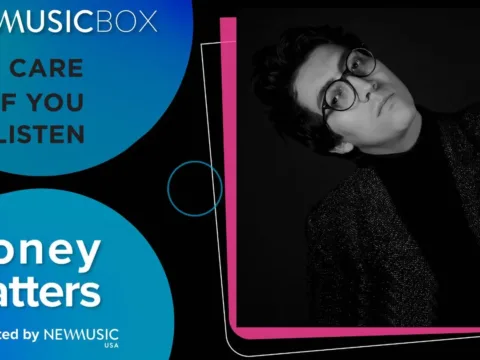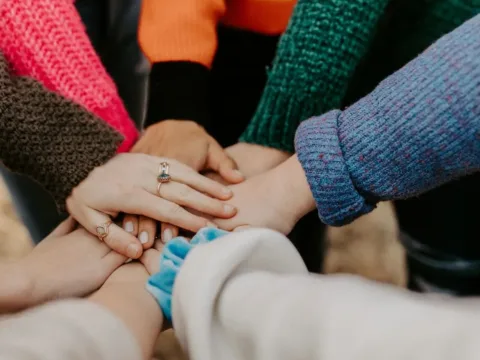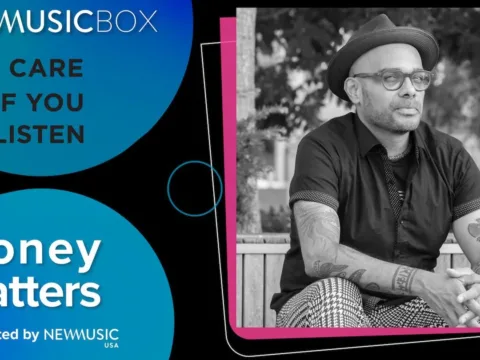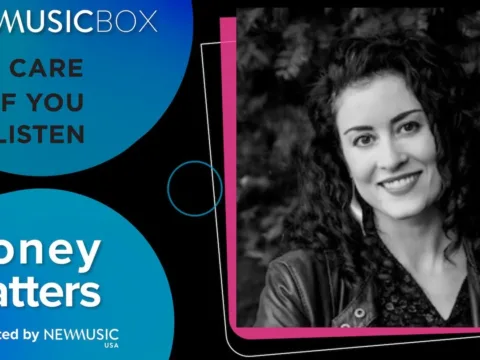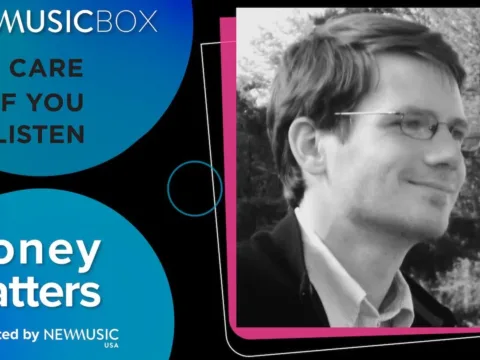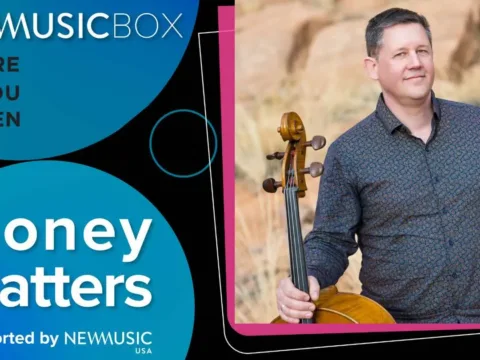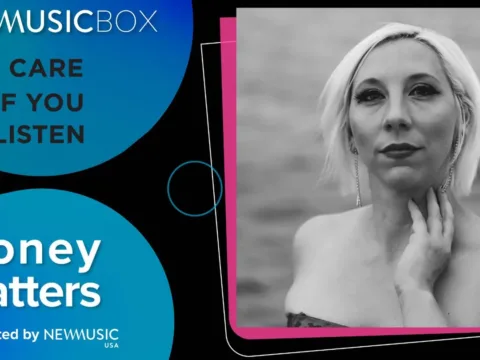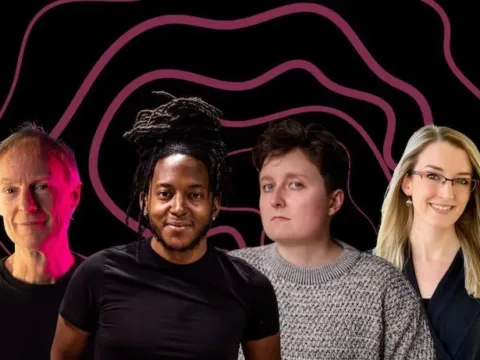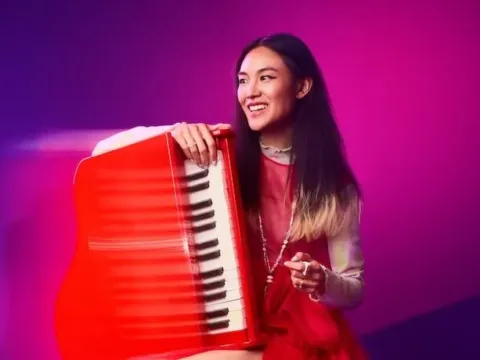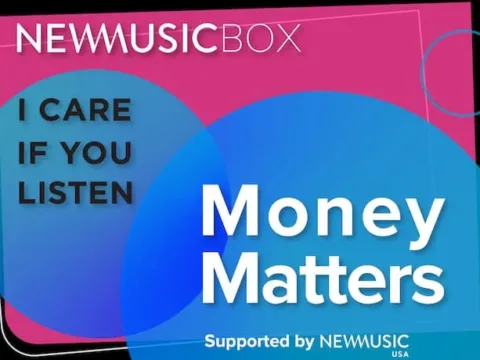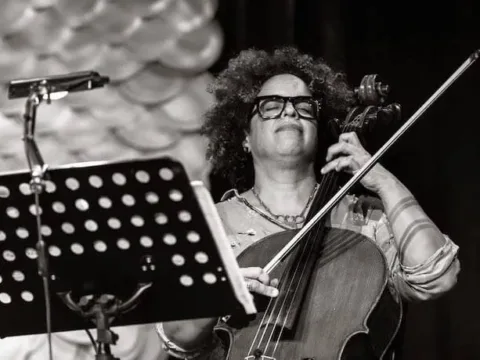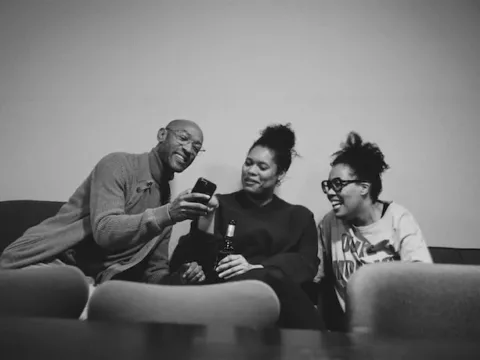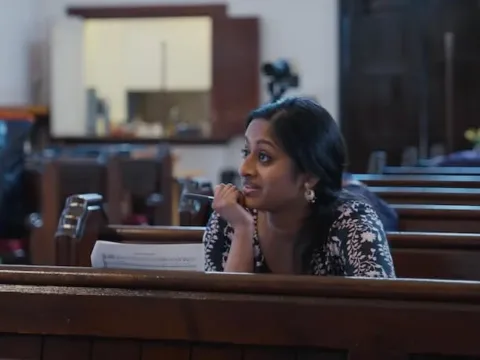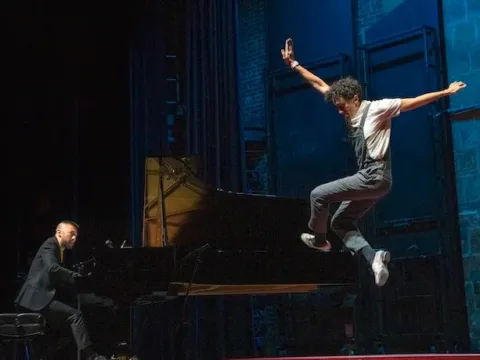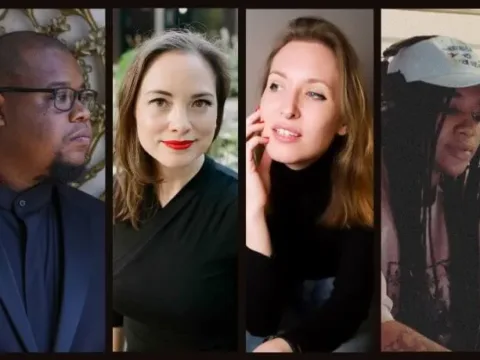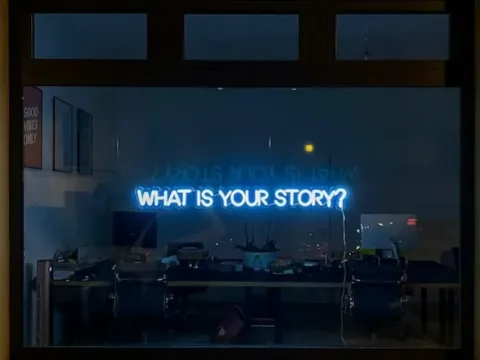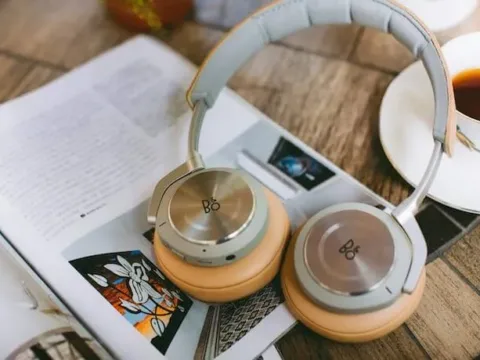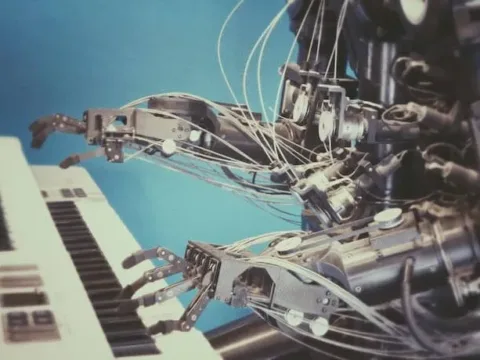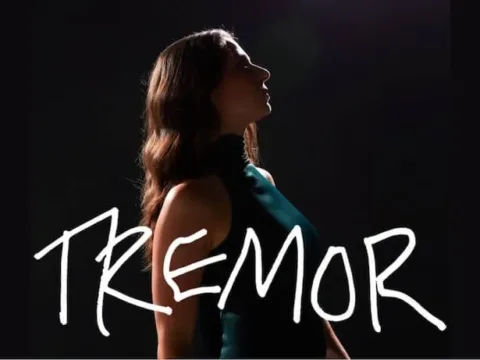“Casting Light” is a 10-part series that explores the often invisible inequities in contemporary arts spaces. Commissioned by ACF and I CARE IF YOU LISTEN, the goal of the series is to highlight the conversations that we need to be having more openly and transparently in order to build diverse, inclusive, and equitable artistic communities. Building on our commitment to anti-racism, a culminating collection of these articles and other resources will be shared for continued learning and dialogue.
On March 2, 2020, I was at the Amsterdam Airport Schiphol awaiting a flight back to California. I was anxious, partly because of the spiking numbers of COVID cases, but mostly about my career. I had just attended a festival where I paid a participation fee to work with an ensemble, and I was exhausting my yearly budget by doing international gigs. I was questioning whether I, a person who was reaching the “age limit” of opportunities for “young composers,” had been making “the right investments.”
After I made it back, California went into lockdown, and it was impossible to continue with business as usual in the arts. Up to that point, our performances, networking opportunities, and access to education had all relied heavily on in-person participation, which hinged on available finances, geographic location/ability to travel, access to childcare, and accommodations for disabled people. But shortly after the U.S. shut down, collaborators started meeting remotely, concerts and conferences went virtual, and organizations and communities gathered funds to support fellow artists in need. I never could have anticipated that over the next 16 months, I would access more opportunities and meet more people than I normally would.
How can we transform our educational and performance spaces in more equitably accessible and equally inclusive ways?
Today, as many institutions and presenting organizations seem to be ready to reopen in-person activities for the 2021-2022 season, it is crucial that we consider what we should carry forward and what could be transformed after a year of experiencing events virtually. In my experience talking with other artists, people’s frustration with virtual events often seems to be related to an expectation that these platforms should mirror in-person meetings. However, the search for equivalence between these two realities is not just a matter of translation or juxtaposition. Why not use the positive aspects of digital platforms to create something totally new and free from unnecessary comparisons, or reimagine our existing platforms in ways that intentionally diversify experiences? How can we transform our educational and performance spaces in more equitably accessible and equally inclusive ways?
Teachers were among the first to be thrown into online spaces as the U.S. went into lockdown, and virtual learning has uncovered different possibilities for collaboration and participation, some of which existed long before the pandemic. Michael Dessen, a composer, musician, educator, and professor of music at the University of California, Irvine, is a veteran in networked performance. Since 2007, Michael has championed live performances over the internet that allow musicians from different locations to play with one another through video projection of on-screen, remotely-located performers and free, high-quality and open source low-latency audio software such as JackTrip and SonoBus. In thinking about our recent reliance on technology, he reflected, “There are lots of possibilities that are now more foregrounded by the experience of telepresence–the ability to project presence through telecommunication technology–during the pandemic, and we really need to be asking not only how did it improve our ability to do what we did before better, but how does it improve our ability to do it differently.” For him, telepresence was never meant to be a replacement. Rather, it shows how in-person and virtual elements can coexist. He says, “The future is hybrid, it’s not an either/or situation.”

Michael has noticed that a lot of music educators understand physically being in a room together as the only platform, which limits the imagination of structuring classes differently. He says, “What if we have a masterclass with someone who’s 3,000 miles away? What if we look up people in the region who are from different schools and form a cool group?” Michael has co-taught a class called Telematic Bridges / Puentes Telemáticos since 2017, and it is a great example of educational inclusiveness through virtual accessibility. His class formed new partnerships between youth in Colombia and Southern California, who collaboratively created music in an intercultural context.
Chaz Underriner, Assistant professor of Digital Arts at Stetson University, plans to accommodate different learning styles by continuing to incorporate virtual components during in-person sessions, specifically the chat function present in many video conferencing and online teaching platforms. “The ability to have parallel, simultaneous conversations using the chat was helpful for students who are shy,” he observes. Real-time chats offer different formality levels within conversations, which inspired more people to participate. Students can make comments as the professor streams a video. Instead of watching the whole video quietly together in a classroom, he says, “I actually got to hear more people’s thoughts, maybe less in-depth, (but) I got more participation in critiques.”
[Tweet “Why not use the positive aspects of digital platforms to create something totally new and free from unnecessary comparisons, or reimagine our existing platforms in ways that intentionally diversify experiences?”]
Moreover, Chaz says that having all participants virtually on the same screen feels more democratic than the typical hierarchical arrangement where speakers stand behind a podium while everybody else is seated. One wonders if this could inspire some actual rearrangement of in-person classrooms, or an even more adventurous engagement with spaces in educational settings — for example, broadcast classes with physical participants joined by virtual participants on the screen so learners who sometimes have to miss classes due to health or home situations can still access and contribute to the discussion.
Educators are not the only ones finding unexpected benefits to virtual spaces. Artists with young children are navigating the relationship between in-person commitments and childcare in new ways. Laura Cetilia is a performer, composer, educator, presenter, a doctoral fellow at Cornell University, and a proud mother. Laura’s partner is also a performer, and before the pandemic, they often had to skip each other’s concerts to care for their child. Virtual events where she didn’t have to leave her home to perform became special because both her child and her partner could be there. However, at one of her virtual concerts, she says, “It was difficult for me as a mother to perform because my kid was right there and she didn’t want to be there.” Concerts still usually happen in the evening during her kid’s bedtime. As in-person concerts come back, she suggests that it would be wonderful to stream live performances online so caretakers at home can still watch the concerts remotely.
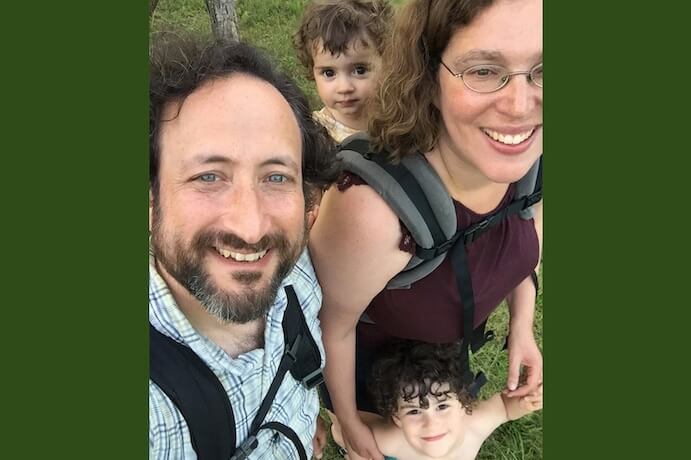
Composer Emily Doolittle was in Scotland when I first met her at the virtual New Music Gathering (NMG). Emily shared that virtual conferences have opened up a more flexible participation for her as a parent. She could give a presentation without being gone for days and attend virtual networking sessions. There are various virtual gathering spaces such as High Fidelity, Gather, and breakout rooms in video conferencing apps, which NMG utilized to host sessions for participants to meet in smaller groups. Emily encourages conferences/institutions to diversify their formats by including pre-recorded materials, virtual presentations, and in-person content. She says it’s not merely about being flexible with what technology we use — it’s about having flexibility for individuals to access, create, or participate in arts with the help of technology and more.
Virtual learning and performance spaces also offer a range of technology solutions that provide accommodations for individuals with physical disabilities, neurodiversity, and mental disorders. At an online conference from Ireland, I met musician, composer, and poet Josephine Dickinson, who has been deaf since the age of six. As an audience member, she shared in the chat that she was able to use a transcription app to follow conversations and to touch monitors to have a better auditory experience. This reminded me of how frustrating it has historically been for the wide spectrum of disabled concertgoers to navigate attending concerts. In a conversation I had with composer Marcos Balter, he proposed using technology as an active curator of experiences. For example, presenters could use AI to assist disabled concertgoers 24/7 to personalize their experience by providing detailed layouts of the venue, services, and attendance options — both in-person and virtual.
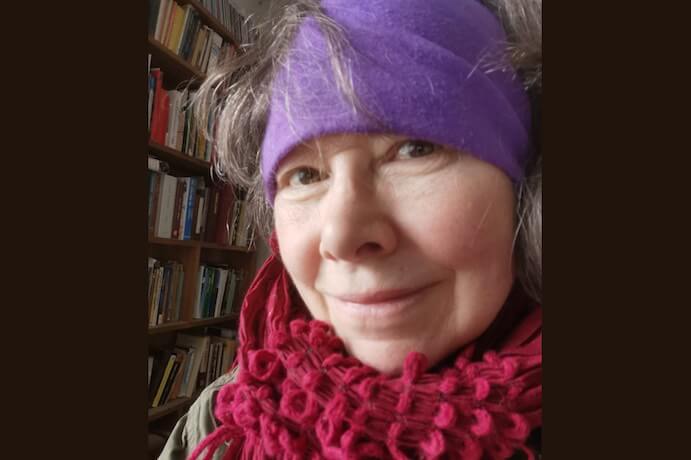
Bassoonist and composer Joy Guidry spoke about how virtual events can also accommodate individuals with neurodiversity or mental disorders. As a musician with bipolar disorder, they describe: “It’s not performance anxiety, it’s anxiety. You feel like you’re dying (during the performance), but you can’t leave.” For them, transparency is very important in terms of creating trust so people feel safe opening up about their mental health, having flexibility with rehearsals and deadlines, and being efficient with plans (i.e. when to take breaks, how long are the pieces, etc.). Joy sees that having in-person and virtual options at the same time can help concertgoers and performers with ADHD or anxiety make choices that feel comfortable for them. As many organizations and ensembles are now equipped with live stream gear and technical support, Joy emphasizes that there’s no reason for institutions to go back to how it was. Organizations should take the opportunity to “experiment more and be creative,” they say, and push virtual possibilities to make watching concerts at home an enjoyable, high-quality, and inclusive experience.
In this period of transition into a hybrid future, institutions have a unique opportunity to address the many problems that have been ignored long before the pandemic.
For artists in their formative years, online experiences can also remove financial barriers to crucial opportunities. I was a freelance composer and performer in my late 20s. To support my artistic career, I had two part-time jobs, including one that paid a minimum wage. Without much financial freedom, I often had to skip events that involved traveling or fees. When events started to go virtual, I found myself not having to worry about transportation, lodging, and meals. Since March 2020, I’ve virtually been to eight countries across four continents to present my works without adding much to my carbon footprint.
In this period of transition into a hybrid future, institutions have a unique opportunity to address the many problems that have been ignored long before the pandemic. Creative solutions are now available as more people are conditioned to engage with virtual platforms. Instead of putting arbitrary barriers back up, it’s time that institutions really think about how they can serve more individuals and the new music community as a whole.
For institutions/organizations:
- Design calls for scores, commissions, or conferences that are flexible and do not require artists to travel (and pay for their own travel expenses).
- Actively learn from individuals’ experiences and facilitate equitable and inclusive spaces for dialogue rather than assuming what people need.
- Recognize that different individuals within the same communities might have very different accessibility needs.
- Equip your organization with as many diverse options as possible to accommodate different preferences and needs, and be honest and transparent about what you can offer.
- Constantly reimagine existing technology and creatively engage with technological possibilities to design your own offerings.
For all of us:
- If someone opens up about their struggles because you are in a more experienced position and might be able to offer support, be open to exploring resources and potential solutions collectively instead of merely saying, “I had to struggle through the same thing.”
- If you are in a position where you can safely be open about the accommodations you need in life, share your experiences.
Let us continue the conversation.
Special thanks to Laura Cetilia, Michael Dessen, Josephine Dickinson, Emily Doolittle, and the many conversations with Marcos Balter, Hassan Estakhrian, Clifton Joey Guidry III, Olivia (Oli) Harris, Chaz Underriner, and Adam Zuckerman during our Atlantic Center for the Arts residency.
I CARE IF YOU LISTEN is an editorially-independent program of the American Composers Forum, funded with generous donor and institutional support. Opinions expressed are solely those of the author and may not represent the views of ICIYL or ACF.
A gift to ACF helps support the work of ICIYL. For more on ACF, visit the “At ACF” section or composersforum.org.
